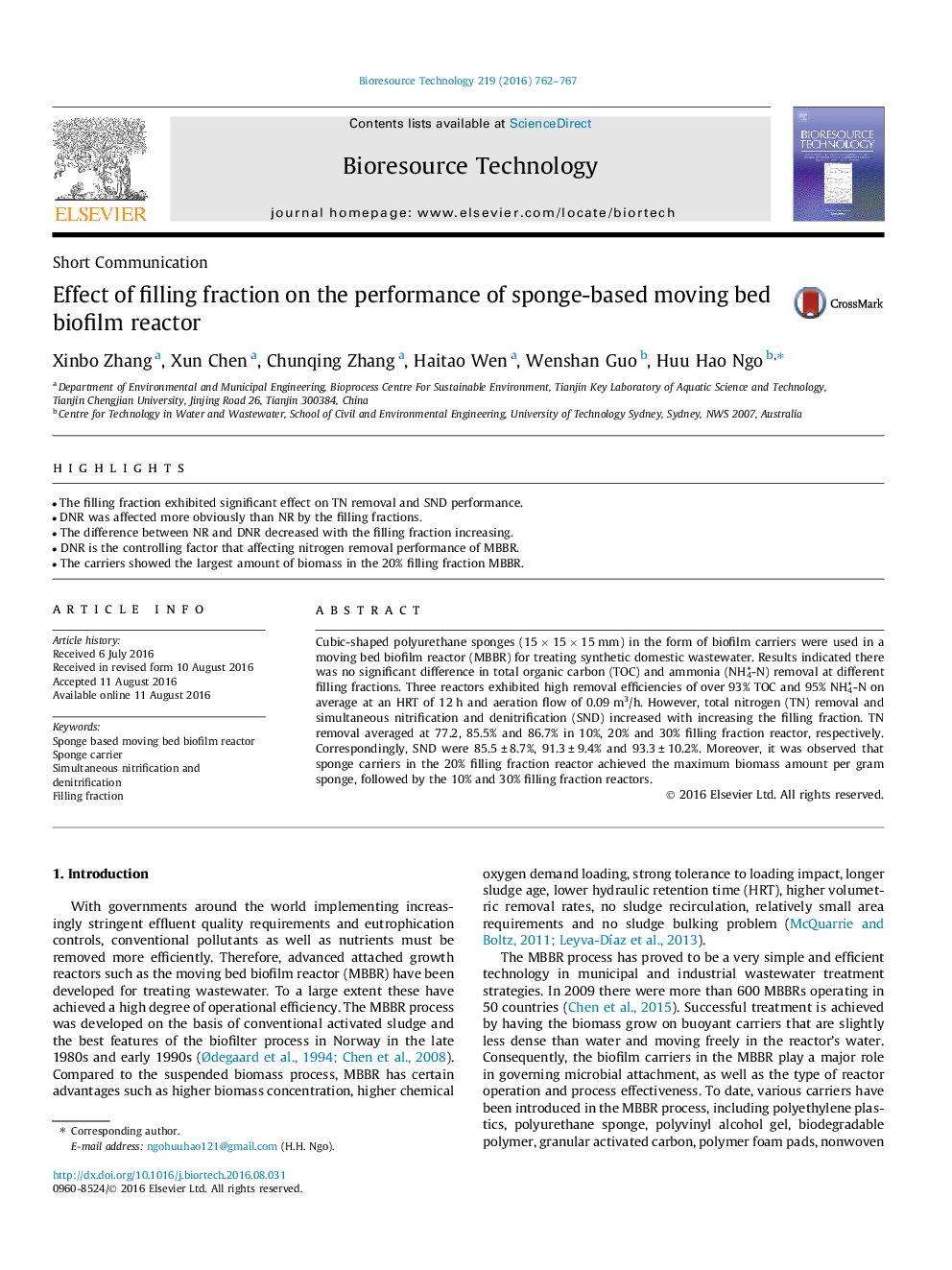| Article ID | Journal | Published Year | Pages | File Type |
|---|---|---|---|---|
| 7070125 | Bioresource Technology | 2016 | 6 Pages |
Abstract
Cubic-shaped polyurethane sponges (15 Ã 15 Ã 15 mm) in the form of biofilm carriers were used in a moving bed biofilm reactor (MBBR) for treating synthetic domestic wastewater. Results indicated there was no significant difference in total organic carbon (TOC) and ammonia (NH4+-N) removal at different filling fractions. Three reactors exhibited high removal efficiencies of over 93% TOC and 95% NH4+-N on average at an HRT of 12 h and aeration flow of 0.09 m3/h. However, total nitrogen (TN) removal and simultaneous nitrification and denitrification (SND) increased with increasing the filling fraction. TN removal averaged at 77.2, 85.5% and 86.7% in 10%, 20% and 30% filling fraction reactor, respectively. Correspondingly, SND were 85.5 ± 8.7%, 91.3 ± 9.4% and 93.3 ± 10.2%. Moreover, it was observed that sponge carriers in the 20% filling fraction reactor achieved the maximum biomass amount per gram sponge, followed by the 10% and 30% filling fraction reactors.
Related Topics
Physical Sciences and Engineering
Chemical Engineering
Process Chemistry and Technology
Authors
Xinbo Zhang, Xun Chen, Chunqing Zhang, Haitao Wen, Wenshan Guo, Huu Hao Ngo,
